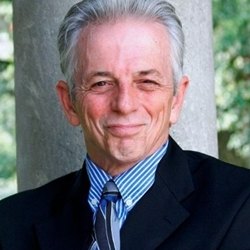It is a crisp, clear autumn afternoon, about 1:30. A full sun hangs in a bright blue sky. A large crowd mills about.
The date: November 19. The year: 1863. The place: Gettysburg, Pennsylvania.
Imagine that you are there. You jostle for position. You strain your neck to get a glimpse. You cup your hand behind your ear... as the 16th President of the United States steps to the center of the platform and begins his "few appropriate remarks."
"Four score and seven years ago, our fathers brought forth on this continent a new nation, conceived in liberty and dedicated to the proposition that all men are created equal."
Thus begins one of the most memorable pieces of American prose written. Pick any adjective of praise to describe The Gettysburg Address, and it's probably appropriate: elegant, eloquent, evocative, profound, poetic, poignant.
Small Words, Big Impact
Study Lincoln's words, though, and you may be surprised to discover that most of them are just one syllable—to be exact, 220 out of 272. Yet no other speech in American history more movingly communicates its message.
If ever there was a case to be made for small words' being effective tools of communication, The Gettysburg Address makes it. As writers, marketers, and communicators, that's not the only lesson we can learn from Lincoln's masterpiece.
Here are a few more.
The Central Idea of the Occasion
The day after the Gettysburg dedication ceremonies, Lincoln received a letter at the White House.
It was from Edward Everett, the most renowned orator of his generation; it was he, not Lincoln, who had been the featured speaker at Gettysburg.
By all accounts, Everett had delivered a stirring two-hour oratory replete with a virtuoso verbal re-enactment of the battle itself, and yet his letter to Lincoln read, in part: "Dear Mr. President, I should be glad if I could flatter myself that I came as near to the central idea of the occasion in two hours, as you did in two minutes."
Everett's correspondence highlights a key point. The Gettysburg Address communicates so effectively because it captures, encapsulates, and illuminates a monumental moment in American history.
It does so with clarity and brevity, all the while informing us and fully engaging our emotions. (Clarity, brevity, informing the target audience while fully engaging their emotions... What marketing professional wouldn't kill for copy like that?)
A good example of such clarity and brevity can be found in the opening lines of Lincoln's conclusion: "But in a larger sense, we can not dedicate, we can not consecrate, we can not hallow this ground. The brave men, living and dead, who struggled here, have consecrated it far above our poor power to add or detract."
With those two eloquent lines, Lincoln simply, effectively, and beautifully articulates "the central idea of the occasion," offering a moving and prayerful tribute to those who struggled there.
A Great Writer at Work
In a February 1991 Life magazine essay, Garry Wills wrote: "Abraham Lincoln is our only Chief Executive who became a great president because he was a great writer."
To study The Gettysburg Address is to observe a great writer at work, a writer in full command of his talent, who skillfully uses rhetorical devices such as these:
- Parallelism—"that nation...any nation," "so conceived...so dedicated"
- Antithesis—"the brave men...our poor power," "what we say here...what they did here"
- Alliteration—"our fathers brought forth," "here highly resolve," "dead shall not have died"
- Repetition—"great civil war," "great battlefield," "great task," "and dedicated," "dedicated to..." "so dedicated," "here dedicated," "increased devotion," "measure of devotion," "...the people," "...the people," "...the people"
But befitting a man we love and cherish for the warmth, wit, and humanity his life and words communicate, in The Gettysburg Address, Lincoln, the writer, shows an attentive heart and keen ear for just the right word, just the right phrase.
A few examples: "conceived in liberty," "engaged in a great civil war," "a final resting place," "who here gave their lives that that nation might live," "the last full measure of devotion," "a new birth of freedom."
In studying The Gettysburg Address, we gain an acute awareness of all the power and beauty that great prose can possess. Meant to dedicate a graveyard, its rich rhetoric reverberates with the rhythm and imagery of life.
That rhythm and imagery, Lincoln's immense technical skills as a writer, and his ever-attentive heart and keen ear for the right words—those are why Lincoln's words live on as vibrant, as real, as meaningful to us today as they were that November day in Gettysburg, seven score and seven years ago.
Indeed, they speak to, they connect with, they touch "the better angels of our nature."
As marketing professionals, business owners, and salespeople, our livelihood depends in large part on our ability to communicate.
And as we prepare for our next marcom project, marketing campaign, sales presentation, or public-speaking opportunity, we would do well to call to mind the lessons to be learned from Lincoln's masterpiece.
We should, for example...
- Focus on the "central idea of the occasion."
- Write and speak from the heart, with clarity and brevity.
- Infuse our communications with rhythm, imagery, and life.
If we consistently do so, though it's doubtful we'll make history, it's a good bet that our campaigns, projects, and communications will be duly noted and well received.
Recommendations for additional reading:




